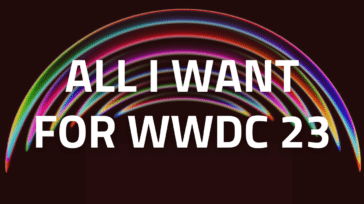 Long-time Mac users may remember that Mac OS X 10.0 (Cheetah) was released on this date in 2001, making today OS X’s tenth (or is that Xth?) birthday.
Long-time Mac users may remember that Mac OS X 10.0 (Cheetah) was released on this date in 2001, making today OS X’s tenth (or is that Xth?) birthday.
While preceded by OS X Server 1.0 and the OS X Public Beta, Cheetah was the first official release of Apple’s UNIX-based software. Unfortunately, by the judgment of many, it really wasn’t “ready for prime-time.” It was slower than OS 9, lacked features like CD burning and DVD playback, and had very few software titles that ran natively on it.
These problems would be addressed in OS X 10.1 (Puma), which was released as a free update to owners of Cheetah, though you had to go to an Apple Store and get a burned copy, or send $20 to Apple to get one via mail. Numerous other updates, like a movable Dock, better 3D performance, drivers for third-party peripherals, and network integration were all included.
OS X 10.2 became the first OS X version to be officially referred to by its code name, Jaguar. It featured Quartz Extreme, which leveraged the video cards in the current batch of Macs for improved graphics performance. A host of new applications, including iChat, and additions, such as Bluetooth support and Rendezvous (later renamed “Bonjour”) Networking rounded out the list of new improvements.
In 2003, we got our hands on OS X 10.3 (Panther). This version introduced many new features, including Exposé for window management and Font Book for font management. Fast User Switching facilitated the use of multiple accounts on the same computer without requiring users to log out first, and XCode was introduced as the new development tool for OS X applications.
Two years later, OSX 10.4 (Tiger) was introduced and was the longest-lived version of OS X, lasting for a full 30 months before Leopard came out. New features included Dashboard, Spotlight, and an updated version of Safari. Its most notable “accomplishment” (besides its longevity), though, was that it was the first version of OS X to run on the new Intel-based Macs. At that time, though, the code base was split; we had both a “PPC” version and an “Intel” version.
The code base was unified in 2007, with the release of OS X 10.5 (Leopard). According to Apple, Leopard contained over 300 changes to the OS, from under-the-hood changes to significant additions like Time Machine. Leopard would also be notable for being the last Mac OS version to run on PowerPC hardware.
When OS X 10.6 (Snow Leopard) shipped in Late 2009, there were no “new” features to really speak of. Snow Leopard’s focus seemed to be more of what they took out. PowerPC Macs were no longer supported, but (probably not coincidentally) the overall installation size of the OS was reduced significantly. There were a couple of surprises for the end-users, such as a change in drive size reporting, confusion about “64-Bit Mode” and a large list of incompatible applications. At the same time, though, we gained quite a bit of a performance increase.
Of course, now we’re all awaiting the release of OS X. 10.7 (Lion). This version promises to add a number of new interface features, many of them seemingly inspired by iOS.
It’s been a wild 10 years; a decade marked by significant growth in the Macintosh platform, especially when compared to the 10 years prior. One is left to wonder how the next decade will go, but there’s one thing you can be sure of: if the Macintosh exists, OWC will be there helping you make your Macs better.









Cheetah was Mac OS X 10.0, not 1.0.
Good eyes Bill…we meant that…forgot the zero…all updated now.